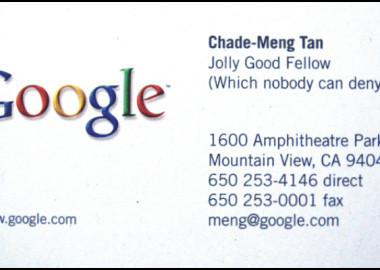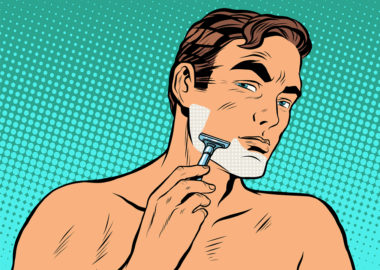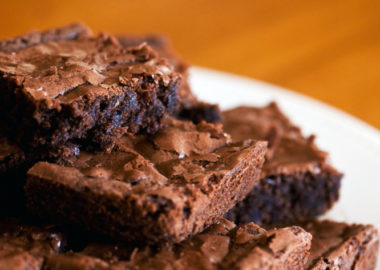
A few weeks ago, Gilmore Girls fans across North America learned they had a unique opportunity coming to a coffee shop near them in honour of the 15th anniversary of the show’s debut. A cleverly disguised social media campaign, paid for by Netflix, would provide free coffee to fans – in a pop-up “Luke’s Diner,” just like in the show.
This might seem like a PR campaign, a marketing campaign, or maybe even a feel-good event for the show’s diehard fans. Some might even recognize this as “experiential marketing.” But it’s so much more. Netflix didn’t just create a network of pop-up coffee shops. They created an intricate event that delivered on all of the marketing goals they have for Netflix’s Gilmore Girls promotion: social buzz, media coverage, and actual leads. Let’s break this down.
Tweet Like a Gilmore
The marketing team at Netflix clearly understands a basic tenet of social media: to encourage conversation and engagement in a social media campaign, you need to give people something real to talk about. And that’s exactly what Netflix did with their Luke’s Diner pop-ups. The people who showed up to the diners across North America didn’t go for a free coffee. (Most, in fact, already had a coffee in hand, which indicates just how deeply the show’s fan base identifies with Lorelai Gilmore.) They went for the Instagram photo-op. The setup for each individual Luke’s was accurately identified by the Atlantic as “selfie-optimized“: the sign and cups were emblazoned with the iconic Luke’s logo, there was an ironically placed “No Cell Phones” sign (a nod to the show’s technology-opposed restaurateur), and some even had a cardboard cutout of actor Scott Patterson… but the Luke’s experience stopped there. However, it didn’t matter to most of the fans, and it definitely didn’t impact the marketing campaign. The existence of the event was enough, and the “share-ability” of the event was key to its success.
How to apply this to your brand:
Create an event, an award, or a campaign that’s worth sharing. Think about what is interesting to your customers – not what is interesting to you – and then find a subtle way to tie it into your business goals.
#LukesDiner
What’s typical for events or promotions such as the Luke’s pop-ups is for brands to impose a hashtag on the event. They might even create a contest to help promote the event: “Use #thisevent2016 for your chance to win a tote bag!”
Netflix did, indeed, do this. There was a sign at the pop-ups that suggested #HappyBirthdayGilmore as the event’s official hashtag, but interestingly, it didn’t trend. #GilmoreGirls and #LukesDiner did, though. This indicates the power of such an event – people shared it without being asked. I would argue they would have been better to either add the hashtag to the coffee cups themselves (it’s likely that few people actually saw the minuscule signage) or, even better, to just do away with it entirely. You’ve already created a genius promotional event, Netflix. Trust in that.
How to apply this to your brand:
Believe in the campaign you’ve created. Sometimes it’s tempting to do too much at once – run a campaign and a contest and a photo booth and tie-in merchandise. Sometimes people don’t need all that, or even want it. A thoughtful, potentially more simple campaign may in fact perform better than a more contrived one.
Snappy Gilmore
So maybe Netflix didn’t include a hashtag on their coffee cups, but they did include a Snapcode. I, along with many others, assumed it was to follow Gilmore Girls on Snapchat. Seemed unnecessary, but I attempted to snap it anyways. When it didn’t work, I Googled – and was informed that this Snapcode is actually Snapchat’s new “Snap to Unlock” feature. Taking a photo of it resulted in a special, time-sensitive Snapchat filter that you could send to friends or add to your story. The filter itself left much to be desired, but it did its job – AdWeek reported that over 500,000 people saw the filter, resulting in over 880,000 impressions. For this event, the social buzz and media coverage were definitely top priorities, but that didn’t mean Netflix couldn’t experiment with a new platform. They knew people were Snapping the event, but the nature of Snapchat prevents tracking, so they created a way to track it, and from there estimate the overall reach on that platform.
How to apply this to your brand:
If you are going for some complexity, have fun with and don’t be afraid to try a little something new along the way! Yes, you may want to prioritize tried-and-true goals for your marketing campaign, but geofilters start at only $5 – an affordable experiment.
PR Boom!
If we’ve learned anything at ECHO, it’s that a PR campaign must work in tandem with any social media campaign. People latch on to content and stories that are rooted in something real. Asking people to retweet a campaign will result in very little engagement; getting media, influencers, or celebrities to do the same thing will create much better results.
That’s why a PR campaign is so important. By launching the pop-ups across North America, Netflix created something tangible that was worth covering – and media outlets delivered. The events promoted on both a local and national scale – all the big guns like Buzzfeed, US Weekly, and Entertainment Weekly had to get in on the clicks. By encouraging media coverage, Netflix multiplied the social and digital reach of the promotion – probably exponentially. Plus, in addition to the articles that promoted the event, there were also stories about the event itself, and others that covered social media’s response to the events – all of which were covered extensively on social.
How to apply this to your brand:
Come up with a short, campaign-specific media list that you can pitch for your marketing campaign. Of course, not everyone can create an international media frenzy over a marketing event, but a business of any size can reach out to appropriate publications for an added boost. The circles of influence just grow from there.
Where You Lead, Conversions Will Follow
Some coffee cups from the Luke’s Diner event actually held a promo code for a free three-month trial of Netflix. Regardless of the fact that it’s nearly impossible to find someone who doesn’t already have a Netflix account, the coffee cup promo codes provide an opportunity to track conversion on Gilmore Girls fans who subscribe to Netflix – and to track the conversion rate of people who go to a real-life Netflix event. This info will undoubtedly come in handy for future event-driven campaigns. Plus, even if only a small percentage of the codes are used, they drive Netflix’s business goals (which I assume include getting every household in North America subscribed) and they convert an already-warm lead.
How to apply this to your brand:
Don’t be afraid to sweeten the deal to convert warm leads. People attending a Netflix event who don’t already subscribe to the service are an appealing customer for Netflix. Think of the equivalent for your business – is it a newsletter subscriber who clicks but doesn’t purchase? Is it a social media follower who doesn’t purchase? Figure out a way to help encourage that conversion.
Gilmore Girls completed its seven-season run in May of 2007… but when Netflix hosted the series in October 2014, fan interest and social buzz re-emerged. Then, with a revival miniseries to promote, they capitalized on that momentum – by using a carefully constructed, customer-centric social media campaign as a comprehensive tool to further their business goals.





